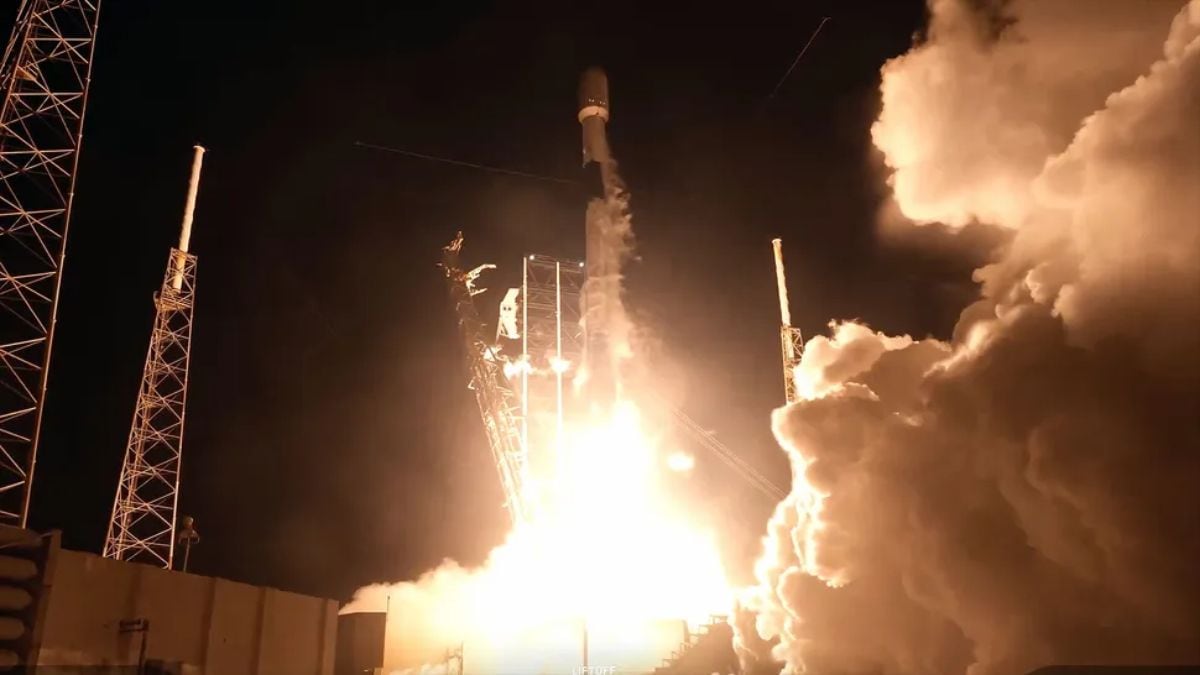
SpaceX launched its next batch of Starlink V2 Mini satellites on a Falcon 9 rocket launch from Cape Canaveral Space Force Station shortly before midnight on Tuesday. The Starlink 10-29 mission added another 28 satellites into the low Earth orbit megaconstellation. A SpaceX Falcon 9 rocket lifted off at 11:37 p.m. EDT (0337 GMT on July 30) from Space Launch Complex 40 (SLC-40) at Cape Canaveral Space Force Station in Florida.
After a nine minute climb into space, the 28 Starlink broadband internet satellites (group 10-29) were on track to be deployed into their intended orbit. After payload deployment, the Falcon 9 first stage separated and successfully landed on the ocean-going droneship “Just Read the Instructions”, positioned in the Atlantic Ocean.
This mission notably marked the 26th flight for the Falcon 9’s first stage, booster B1069, which has been a part of missions include diverse payloads such as CRS-24, Eutelsat HOTBIRD 13F, OneWeb 1, SES-18 and SES-19, alongside 22 other Starlink deployments.
Implications for Starlink and SpaceX
According to satellite tracker Jonathan McDowell, the Starlink constellation now includes over 8,050 active satellites (out of more than 9,300 launched since 2018). The growing fleet is intended to provide high-speed internet worldwide, and each launch like this one adds capacity and coverage. The mission also highlights SpaceX’s extraordinary launch cadence and technical progress.
It was the company’s 96th launch of 2025, reflecting a packed schedule and intense operational tempo. Two more missions were scheduled later that week — another Starlink launch from California and NASA’s Crew-11 flight to the International Space Station. The repeated reuse of boosters (as evidenced by B1069’s 26 flights) is central to lowering costs and sustaining this ambitious cadence.


